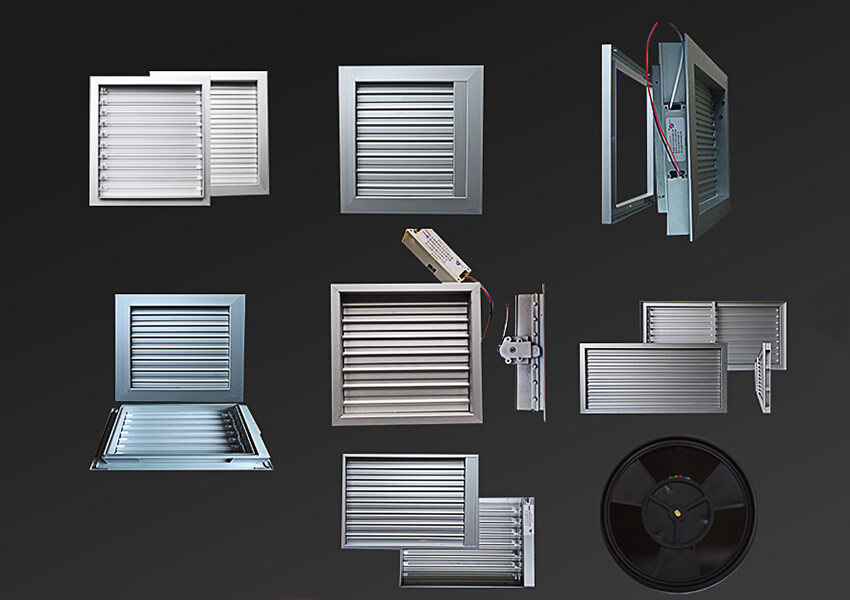In the ever-evolving landscape of home and commercial building management, one topic has emerged as a top priority: energy efficiency. As energy costs continue to rise and environmental sustainability becomes a global concern, finding ways to reduce energy consumption and minimize the carbon footprint has become imperative. Among the many facets of achieving energy efficiency, your HVAC (Heating, Ventilation, and Air Conditioning) system plays a central role.
HVAC accessories, often considered the unsung heroes of energy efficiency, have the potential to significantly enhance the performance of your HVAC system. These accessories offer an array of benefits, from improved temperature control to better indoor air quality (IAQ), and they play a pivotal role in achieving energy savings that translate into reduced utility bills.
In this comprehensive guide, we will unravel the world of HVAC accessories, empowering you with the knowledge needed to make informed decisions. We will explore various accessories and their functions, providing insights into how each contributes to energy efficiency. To select the best HVAC accessories tailored to your needs.
Understanding HVAC Systems
Before delving into the world of HVAC accessories and their role in enhancing energy efficiency, it’s essential to have a foundational understanding of HVAC systems—the beating heart of indoor comfort and air quality management.
A. HVAC Components
An Integrated Ecosystem
At its core, an HVAC system consists of three main components:
- Heating: This component is responsible for heating indoor spaces during colder months, using various methods such as furnaces, boilers, or heat pumps.
- Ventilation: Ventilation is all about maintaining fresh air circulation and removing indoor pollutants, ensuring a healthy and breathable environment.
- Air Conditioning: The cooling component of HVAC systems, often referred to as air conditioning, helps regulate indoor temperatures during hot weather.
B. Energy Consumption in HVAC Systems
Unveiling the Energy Guzzler
HVAC systems are substantial consumers of energy, accounting for a significant portion of a building’s energy usage. Understanding this energy consumption is crucial in recognizing the potential for energy savings.
- Residential Energy Use: In residential settings, HVAC systems typically consume around 48% of total energy usage, making them the largest energy-consuming appliances in homes.
- Commercial Energy Use: In commercial buildings, HVAC systems can account for up to 40% of the total energy consumption, underscoring their significance in operational costs.
C. HVAC Efficiency Metrics
Measuring Performance
To gauge the energy efficiency of HVAC systems and accessories, several metrics are commonly used:
- SEER (Seasonal Energy Efficiency Ratio): SEER measures the cooling efficiency of air conditioners and heat pumps. Higher SEER ratings indicate greater efficiency.
- EER (Energy Efficiency Ratio): EER is similar to SEER but focuses on a specific set of conditions, often used to evaluate commercial HVAC equipment.
- HSPF (Heating Seasonal Performance Factor): HSPF measures the heating efficiency of heat pumps. Higher HSPF ratings signify better heating performance.
Understanding these metrics is essential when assessing the energy efficiency of HVAC systems and the accessories that can enhance them.
D. The Role of HVAC Accessories
Optimizing Energy Efficiency
Now that we’ve laid the groundwork for HVAC systems and their energy consumption, it’s time to explore the pivotal role that HVAC accessories play in optimizing energy efficiency. These accessories act as catalysts, enabling HVAC systems to operate more efficiently and effectively. In the following sections, we’ll dive deeper into the various HVAC accessories and their contributions to energy efficiency. From programmable thermostats to smart HVAC controls, each accessory has a unique role in the quest for improved energy savings and IAQ.
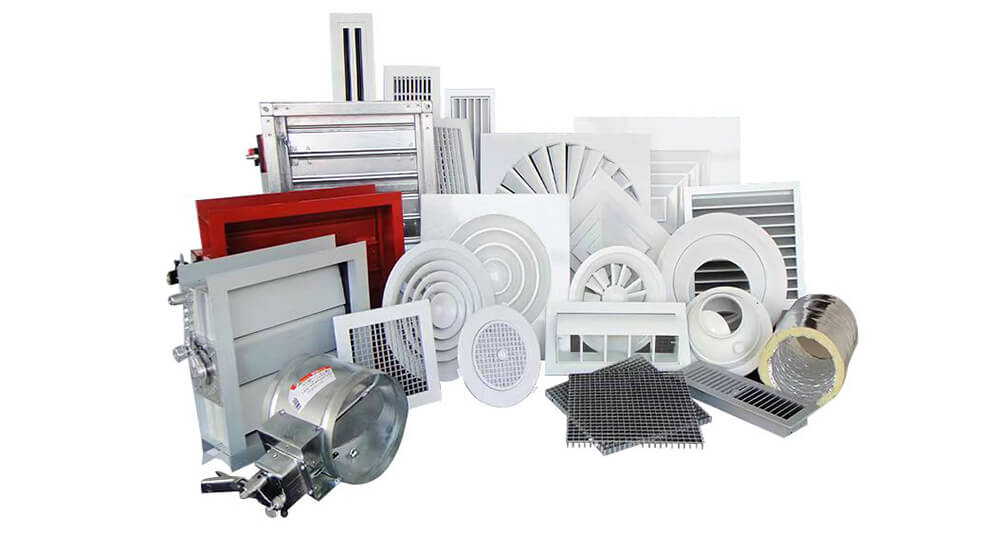
Common HVAC Accessories for Energy Efficiency
Now that we’ve explored the impact of HVAC accessories on energy efficiency, let’s delve into some of the most common and effective accessories that can transform your HVAC system into a more energy-efficient powerhouse.
A. Programmable Thermostats
Effortless Temperature Control
- Functionality: Programmable thermostats allow you to set heating and cooling schedules that align with your daily routines and preferences.
- Energy Savings: By automating temperature adjustments, these thermostats prevent unnecessary HVAC operation when spaces are unoccupied, leading to substantial energy savings.
- Compatibility: Ensure compatibility with your HVAC system and consider features like Wi-Fi connectivity for remote control.
B. Zoning Systems
Tailored Comfort and Efficiency
- Zoning Defined: Zoning systems divide your property into different temperature zones, each with its thermostat, enabling precise control over indoor temperatures.
- Energy Efficiency Benefits: Zoning eliminates the need to condition the entire space uniformly, reducing energy waste and promoting energy efficiency.
- Professional Installation: Seek professional guidance for designing and installing a zoning system that aligns with your property’s layout and needs.
C. HVAC Air Filters
Cleaner Air, Lower Energy Consumption
- Filter Functions: HVAC air filters not only enhance indoor air quality but also contribute to energy efficiency by preventing dust and allergen buildup on HVAC components.
- High-Efficiency Options: Consider high-efficiency air filters with MERV ratings that capture finer particles, reducing strain on the HVAC system and promoting energy savings.
- Regular Maintenance: Change or clean air filters regularly to ensure optimal airflow and energy-efficient operation.
D. Ceiling Fans
Promoting Efficient Air Circulation
- Complementary Role: Ceiling fans work alongside your HVAC system by helping distribute conditioned air more effectively.
- Energy Savings: Using ceiling fans allows you to set your thermostat a few degrees higher while maintaining the same level of comfort, resulting in energy savings.
- Direction Matters: Adjust fan settings seasonally; counterclockwise for cooling and clockwise for heating.
E. Smart HVAC Controls
Intelligent Energy Management
- Automation and Data: Smart HVAC controls utilize sensors and data analytics to optimize heating and cooling operations based on real-time data.
- Energy Optimization: These controls adapt settings in response to occupancy, weather, and indoor conditions, ensuring your HVAC system operates at peak efficiency.
- Compatibility and Integration: Ensure compatibility with your HVAC equipment and consider systems that can integrate with other smart home devices for centralized control.
F. Heat Recovery Ventilators (HRVs) and Energy Recovery Ventilators (ERVs)
Efficient Ventilation and Energy Recovery
- Fresh Air Exchange: HRVs and ERVs maintain indoor air quality by exchanging stale indoor air with fresh outdoor air while recovering heat or coolness from the outgoing air.
- Energy Recovery: The heat or coolness recovered during this process pre-conditions the incoming air, reducing the workload on your HVAC system and enhancing energy efficiency.
- Professional Installation: Consult with HVAC professionals to determine the most suitable HRV or ERV for your property.
G. Solar-Powered HVAC Accessories
Harnessing Renewable Energy
- Solar Panels: Solar panels can generate electricity to power HVAC systems, reducing your reliance on grid electricity and lowering energy costs.
- Solar Water Heaters: Solar water heaters can supplement your HVAC system by providing hot water for space heating or domestic use, further enhancing energy efficiency.
- Financial Incentives: Explore government incentives and tax credits that may be available for solar-powered HVAC accessories to maximize your savings.
In the next sections of this guide, we will delve deeper into each of these common HVAC accessories, providing insights into their functions, benefits, and factors to consider when selecting the best options for your unique requirements. By understanding the potential of these accessories, you can make informed decisions to maximize your HVAC system’s energy efficiency and overall performance.
Selecting the Best HVAC Accessories for Energy Efficiency
Now that we’ve explored the essential HVAC accessories that can enhance energy efficiency, it’s time to delve into the process of selecting the best accessories tailored to your specific needs and goals. Making the right choices can significantly impact your HVAC system’s performance and energy savings.
A. Compatibility with Existing System
Harmonizing Components
- Assess Your HVAC System: Begin by evaluating your existing HVAC system, including its type, capacity, and age. Ensure that any accessories you select are compatible with your system’s specifications.
- Consult Professionals: If you’re uncertain about compatibility, seek advice from HVAC professionals who can recommend suitable accessories for your system.
B. Energy Efficiency Ratings
Deciphering Efficiency Metrics
- SEER, EER, and HSPF Ratings: Pay attention to efficiency ratings such as SEER (Seasonal Energy Efficiency Ratio), EER (Energy Efficiency Ratio), and HSPF (Heating Seasonal Performance Factor) for air conditioners, heat pumps, and heating equipment, respectively.
- High Ratings: Higher ratings indicate better energy efficiency. Choose accessories with favorable ratings to maximize energy savings.
C. Cost-Benefit Analysis
Balancing Investment and Returns
- Total Cost of Ownership: Consider the initial cost of the accessory, installation expenses, and potential long-term savings. Calculate the accessory’s total cost of ownership to determine its value.
- Return on Investment (ROI): Assess the expected energy savings and how long it will take for the accessory to pay for itself through reduced energy bills.
D. Long-Term Savings
Investing in Efficiency
- Long-Term View: While energy-efficient accessories may have a higher upfront cost, they often provide substantial long-term savings by reducing energy consumption and maintenance expenses.
- Lifetime Savings: Calculate the potential lifetime savings an accessory can offer to determine its overall value.
E. Environmental Impact
Reducing Your Carbon Footprint
- Energy Consumption: Evaluate the environmental impact of accessories by considering their energy consumption. Accessories that reduce energy usage contribute to a lower carbon footprint.
- Eco-Friendly Materials: Additionally, consider accessories made from sustainable or recyclable materials to minimize environmental impact.
F. Expert Recommendations
Seeking Professional Advice
- HVAC Professional Consultation: When in doubt, consult with HVAC professionals who have experience with accessory selection and installation. They can provide tailored recommendations based on your specific circumstances.
- Customer Reviews and Testimonials: Read customer reviews and testimonials to gain insights into how well a particular accessory performs in real-world applications.
G. DIY vs. Professional Installation
Installation Considerations
- DIY Feasibility: Some accessories may be suitable for DIY installation, while others require professional expertise. Assess your capabilities and choose accordingly.
- Professional Expertise: For complex installations or when unsure about the process, opt for professional installation to ensure the accessory functions optimally.
H. Warranty and Support
Protection and Peace of Mind
- Warranty Coverage: Investigate the warranty offered with the accessory. A comprehensive warranty protects in case of defects or malfunctions.
- Manufacturer Support: Ensure that the accessory comes from a reputable manufacturer with a strong customer support system.
In the following sections, we will delve deeper into each of the common HVAC accessories, providing detailed insights into their functions, benefits, and considerations for selecting the best options. Armed with this knowledge, you can make informed decisions that align with your energy efficiency goals, budget, and environmental values, ultimately optimizing your HVAC system’s performance and reducing energy consumption.
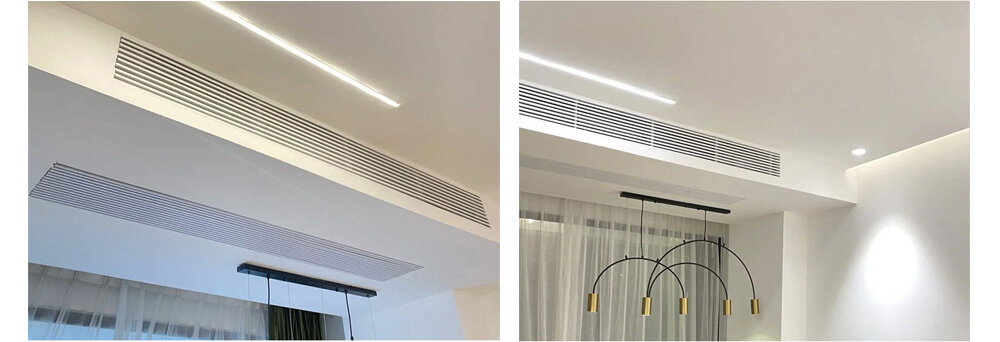
Programmable Thermostats
Programmable thermostats are among the most accessible and impactful HVAC accessories for enhancing energy efficiency. These smart devices empower you to take control of your HVAC system’s operation, allowing you to tailor heating and cooling cycles to match your lifestyle and preferences.
A. How Programmable Thermostats Work
Setting the Temperature Agenda
- Custom Schedules: Programmable thermostats enable you to create custom temperature schedules for different times of the day and days of the week. This flexibility ensures that your HVAC system operates optimally based on your routine.
- Automated Adjustments: Once programmed, these thermostats automatically adjust the temperature to your desired levels, eliminating the need for manual changes.
B. Energy Savings Potential
Efficiency in Action
- Preventing Overheating and Overcooling: Programmable thermostats prevent your HVAC system from working excessively. They maintain a more consistent temperature, preventing overheating in the winter and overcooling in the summer.
- Optimizing Off-Peak Hours: You can schedule temperature setbacks during times when your space is unoccupied or when electricity rates are higher, maximizing energy savings.
C. Types of Programmable Thermostats
Choosing the Right Model
- 7-Day Models: These thermostats offer the most flexibility, allowing you to create unique schedules for each day of the week. Ideal for those with erratic schedules.
- 5-2 Models: Suitable for people with consistent weekday and weekend routines, as they allow separate schedules for weekdays and weekends.
- 5-1-1 Models: These thermostats are designed for those with workdays and weekend schedules that differ from each other.
- 1-Week Models: These thermostats offer a single, consistent schedule for the entire week, making them straightforward to program.
D. Wi-Fi-Enabled Programmable Thermostats
Remote Control and Smart Integration
- Remote Access: Wi-Fi-enabled programmable thermostats allow you to control your HVAC system remotely through a smartphone app or web interface.
- Integration with Smart Home Ecosystems: These thermostats often integrate seamlessly with smart home ecosystems, enabling voice commands and automation through platforms like Amazon Alexa or Google Assistant.
E. Tips for Using Programmable Thermostats Effectively
Maximizing Energy Savings
- Setback Temperatures: Utilize setback temperatures during times when you don’t need your HVAC system to work as hard, such as when you’re away at work or asleep.
- Avoid Manual Overrides: Resist the urge to manually override the programmed settings frequently, as this can negate the energy-saving benefits.
- Regular Maintenance: Ensure that your programmable thermostat is updated with the latest firmware to maintain optimal performance.
F. Professional Installation vs. DIY Installation
Installation Considerations
- DIY Installation: Many programmable thermostats are designed for DIY installation and come with detailed instructions. If you’re comfortable with basic wiring, you can install them yourself.
- Professional Installation: For complex systems or if you’re unsure about the installation process, consider hiring a professional HVAC technician to ensure proper setup.
Incorporating a programmable thermostat into your HVAC system is a practical and cost-effective way to boost energy efficiency. The ability to create customized schedules, coupled with the potential for remote control and integration with smart home systems, provides you with the tools to maximize comfort and savings. In the next sections, we will explore other HVAC accessories that can further enhance energy efficiency, allowing you to make informed decisions for a well-rounded and efficient HVAC system.

Zoning Systems
Zoning systems offer a sophisticated solution to enhance both comfort and energy efficiency within your home. By dividing your property into distinct temperature zones, each with its thermostat and control, you gain the ability to customize heating and cooling precisely where and when it’s needed.
A. What Are Zoning Systems?
Creating Temperature Zones
- Zone Definition: Zoning systems divide your property into different temperature zones, allowing for individualized control of each area’s climate.
- Thermostat for Each Zone: Each zone is equipped with its thermostat, providing localized temperature adjustments.
B. Benefits of Zoning Systems
Efficiency and Comfort Combined
- Energy Efficiency: Zoning systems reduce energy waste by focusing heating or cooling efforts only on occupied areas, eliminating the need to condition the entire space uniformly.
- Customized Comfort: Occupants can set their preferred temperatures in their designated zones, enhancing overall comfort.
- Reduced HVAC Strain: By optimizing where and when heating or cooling is delivered, zoning systems reduce the strain on your HVAC equipment, potentially extending its lifespan.
C. Types of Zoning Systems
Selecting the Right System
- Single-Zone Systems: Ideal for smaller homes or properties with consistent climate needs, these systems have a single thermostat controlling the entire space.
- Multi-Zone Systems: Multi-zone systems divide your property into multiple zones, each with its thermostat. These are suitable for larger homes or properties with varying temperature requirements.
- Smart Zoning Systems: Smart zoning systems incorporate advanced technology, enabling precise control through mobile apps and smart home integration.
D. Professional Design and Installation
Customized Zoning
- Consultation with HVAC Experts: To maximize the benefits of zoning, consult with HVAC professionals who can assess your property’s layout and heating and cooling needs.
- Zone Configuration: Professionals will determine the optimal number and placement of zones to achieve the desired comfort and efficiency.
- Proper Equipment Selection: The right equipment, such as dampers and controls, is essential for effective zoning. Professionals will select and install these components correctly.
E. Programming and Maintenance
Optimizing Zone Performance
- Programming Zones: Users can create schedules and temperature settings for each zone based on occupancy and usage patterns.
- Regular Maintenance: Ensure that dampers, thermostats, and controls are properly maintained to prevent malfunctions and optimize performance.
F. Energy Savings with Zoning Systems
Efficiency in Action
- Reduced Overheating and Overcooling: Zoning prevents excessive heating or cooling, focusing energy usage only where needed.
- Lower Utility Bills: By avoiding unnecessary conditioning of unoccupied areas, you’ll experience noticeable reductions in your utility bills.
Zoning systems represent a significant advancement in HVAC technology, providing tailored comfort and remarkable energy savings. By dividing your home into zones with individualized control, you can ensure that every area remains comfortable while minimizing energy waste. In the following sections, we will explore additional HVAC accessories that complement zoning systems, allowing you to further optimize your energy-efficient home environment.

HVAC Air Filters
HVAC air filters play a vital role in maintaining indoor air quality and optimizing the energy efficiency of your heating and cooling systems. Understanding their function and selecting the right type can significantly impact both the air you breathe and your energy bills.
A. How HVAC Air Filters Work
Filtration for Health and Efficiency
- Particle Capture: HVAC air filters are designed to capture particles such as dust, pollen, pet dander, and airborne pollutants from the indoor air as they circulate through the system.
- Improved Indoor Air Quality: By removing contaminants, these filters enhance indoor air quality, promoting a healthier living environment.
B. Efficiency Ratings (MERV Ratings)
Assessing Filtration Performance
- MERV Ratings: Minimum Efficiency Reporting Value (MERV) is a standard used to measure the efficiency of air filters. The higher the MERV rating, the finer the particles the filter can capture.
- Choosing the Right MERV: Select a filter with a MERV rating appropriate for your specific needs. Higher MERV ratings are more effective but may require more frequent replacement.
C. High-Efficiency Air Filters
Enhanced Filtration
- HEPA Filters: High-efficiency particulate Air (HEPA) filters are known for their exceptional filtration capabilities, capturing even the smallest particles, including allergens and bacteria.
- Electrostatic Filters: Electrostatic air filters use static electricity to attract and trap particles, providing efficient filtration.
- Activated Carbon Filters: These filters are effective at removing odors and volatile organic compounds (VOCs) from the air in addition to capturing particles.
D. Benefits of HVAC Air Filters
Beyond Clean Air
- Energy Efficiency: Clean air filters allow for better airflow through the HVAC system, reducing strain on the equipment and promoting energy efficiency.
- Lower Maintenance: Regular filter replacement or cleaning prevents dust and dirt buildup on HVAC components, reducing the need for maintenance.
- Extended Equipment Life: By protecting HVAC equipment from contaminants, air filters can contribute to a longer system lifespan.
E. Regular Maintenance
Optimizing Filtration
- Scheduled Replacements: Follow manufacturer recommendations for filter replacement intervals. Typically, filters should be replaced every 1 to 3 months, depending on filter type and usage.
- Inspect and Clean: For reusable filters, inspect and clean them as needed to maintain proper airflow and filtration performance.
F. Filter Types for Specific Needs
Tailoring Filtration
- Allergen-Reducing Filters: Designed to capture allergenic particles, these filters are beneficial for allergy sufferers.
- Smoke and Odor Control Filters: Filters with activated carbon are effective at removing smoke and odors from the air.
- Pet-Friendly Filters: If you have pets, consider filters designed to capture pet dander and hair.
G. Professional Assessment
Consultation with HVAC Experts
- Filter Compatibility: HVAC professionals can recommend filters that are compatible with your system’s specifications.
- Air Quality Assessment: Professionals can assess your indoor air quality and recommend filters that address specific concerns.
By selecting the right HVAC air filters and maintaining them regularly, you can ensure that your HVAC system operates efficiently while providing clean and healthy indoor air. In the subsequent sections, we will explore additional HVAC accessories that can further enhance your system’s energy efficiency and performance.
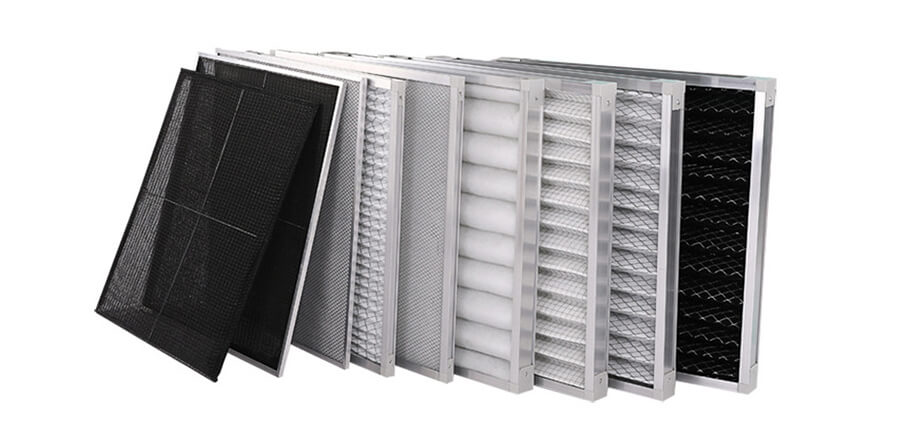
Ceiling Fans
Ceiling fans are often underestimated in their ability to improve both comfort and energy efficiency within your home. When used in conjunction with your HVAC system, they can help distribute conditioned air more effectively, allowing you to maintain a comfortable temperature while reducing your reliance on heating and cooling.
A. How Ceiling Fans Work with HVAC Systems
Augmenting Air Circulation
- Air Mixing: Ceiling fans create airflow in rooms, preventing hot or cold spots by mixing conditioned air with room air.
- Stratification Prevention: In the winter, fans can be set to reverse mode, gently pushing warm air near the ceiling down into the living space, improving overall heating efficiency.
B. Benefits of Using Ceiling Fans
Balancing Comfort and Energy Savings
- Enhanced Comfort: Ceiling fans create a cooling effect in the summer by promoting better air circulation and improving perceived comfort even at slightly higher thermostat settings.
- Energy Savings: By allowing you to set your thermostat a few degrees higher in the summer or lower in the winter, ceiling fans can contribute to substantial energy savings.
C. Ceiling Fan Efficiency
Selecting Energy-Efficient Fans
- Energy Star-Certified Fans: Look for ceiling fans with the Energy Star certification, which indicates that they meet strict energy efficiency guidelines.
- Variable Speed Fans: Ceiling fans with variable speed settings provide more precise control over airflow and can be adjusted according to your comfort needs.
D. Summer And Winter Ceiling Fan Use
Seasonal Adjustment
- Summer Use: In the summer, set your ceiling fan to rotate counterclockwise (standard mode) at a higher speed to create a cooling breeze.
- Winter Use: In the winter, set your ceiling fan to rotate clockwise (reverse mode) at a low speed to gently recirculate warm air trapped near the ceiling.
E. Proper Ceiling Fan Sizing and Placement
Optimizing Airflow
- Sizing: Choose the right-sized ceiling fan for your room to ensure optimal airflow. Larger rooms may require multiple fans.
- Placement: Ceiling fans should be installed at an appropriate height, typically about 7 to 9 feet above the floor, for effective air circulation.
F. Ceiling Fan Control Options
Convenient Adjustments
- Pull Chains: Most ceiling fans come with pull chains that allow you to control fan speed and direction.
- Wall Controls: Wall-mounted controls provide easy access to fan settings.
- Remote Controls: Remote-controlled fans offer the convenience of adjusting settings from anywhere in the room.
G. Maintenance and Cleaning
Ensuring Efficiency
- Regular Cleaning: Dust and dirt can accumulate on fan blades, affecting performance. Clean your ceiling fan blades regularly to maintain efficiency.
- Balancing Blades: Ensure that fan blades are balanced to prevent wobbling, which can lead to noise and reduced efficiency.
Ceiling fans are a cost-effective and energy-efficient addition to your HVAC system, enhancing comfort while reducing your energy consumption. When properly selected, installed, and maintained, ceiling fans can complement your heating and cooling efforts, making your home more comfortable and environmentally friendly. In the next sections, we will explore additional HVAC accessories that can further optimize your energy-efficient home.
Smart HVAC Controls
Smart HVAC controls, often referred to as smart thermostats, are revolutionizing the way we interact with heating and cooling systems. These devices provide precise control, automation, and the ability to monitor and adjust your HVAC system remotely, leading to significant energy savings.
A. The Advantages of Smart HVAC Controls
Efficiency, Convenience, and Connectivity
- Remote Control: Smart HVAC controls allow you to adjust your heating and cooling settings remotely through smartphone apps or web interfaces.
- Automated Schedules: Create custom temperature schedules that align with your daily routine, optimizing comfort and efficiency.
B. Energy Efficiency Features
Enhancing System Performance
- Learning Algorithms: Many smart thermostats utilize machine learning to understand your preferences and adjust settings accordingly, maximizing energy savings.
- Geofencing: Smart thermostats can detect when you leave or return home based on your smartphone’s location, allowing them to adjust temperatures accordingly.
C. Compatibility and Integration
Seamless Integration
- Compatibility: Ensure that the smart HVAC control you choose is compatible with your existing HVAC system. Most are designed to work with common heating and cooling systems.
- Smart Home Integration: Smart thermostats can often integrate with other smart home devices, such as voice assistants (e.g., Amazon Alexa or Google Assistant), allowing for voice commands and automation.
D. Energy Usage Insights
Informed Decision-Making
- Energy Reports: Many smart HVAC controls provide detailed energy reports, allowing you to track your HVAC system’s performance and identify opportunities for further efficiency improvements.
- Usage History: Access historical data on your HVAC system’s usage, helping you understand your energy consumption patterns.
E. Smart Thermostat Brands
Leading the Way
- Nest (by Google): Known for its learning capabilities and user-friendly interface, Nest thermostats have gained popularity for their energy-saving features.
- Ecobee: Ecobee smart thermostats are praised for their room sensors, which help optimize comfort by adjusting temperatures based on occupancy.
- Honeywell: Honeywell offers a range of smart thermostats with various features, including voice control and geofencing.
F. Installation and Setup
Professional or DIY
- DIY Installation: Many smart thermostats are designed for easy DIY installation, with step-by-step instructions provided in the packaging.
- Professional Installation: If you’re unsure about installation or have a complex HVAC system, consider hiring a professional HVAC technician for proper setup.
G. Security and Privacy
Protecting Your Data
- Data Encryption: Ensure that your chosen smart thermostat uses secure data encryption to protect your personal information.
- Privacy Settings: Review and configure privacy settings to control what data is collected and shared by the smart thermostat.
Smart HVAC controls empower homeowners to take control of their heating and cooling systems in ways that were previously unimaginable. Their energy-efficient features, convenience, and connectivity capabilities make them a valuable addition to any HVAC system. In the following sections, we will explore additional HVAC accessories that can further enhance energy efficiency, helping you create a more comfortable and eco-friendly home environment.
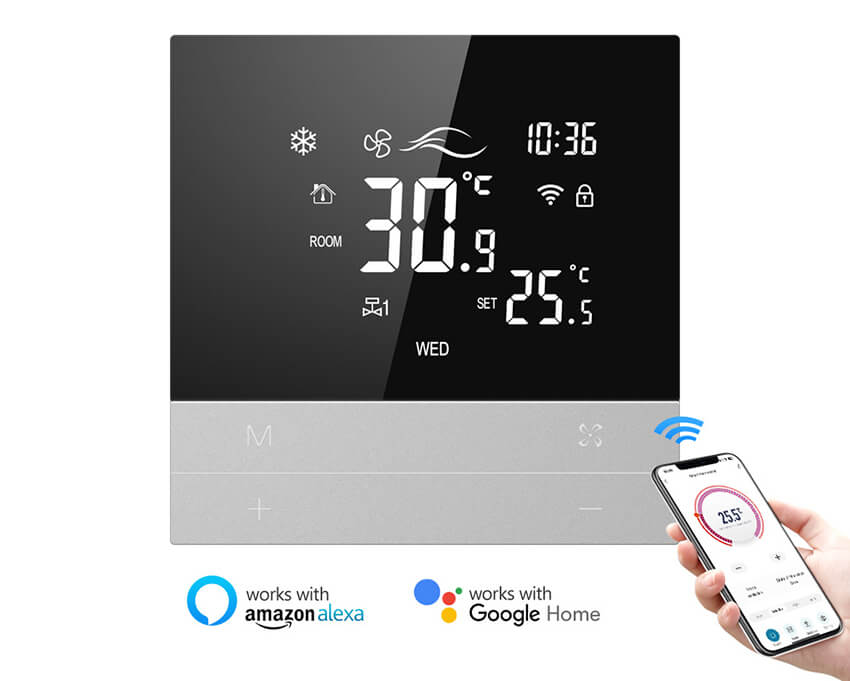
HRVs and ERVs
Heat Recovery Ventilators (HRVs) and Energy Recovery Ventilators (ERVs) are innovative HVAC accessories designed to maintain a healthy indoor environment while minimizing energy loss. These systems help ensure a constant supply of fresh outdoor air while recovering the energy from the exhausted indoor air.
A. Understanding HRVs and ERVs
Balancing Air Exchange
- HRVs: Heat Recovery Ventilators transfer heat from the indoor air being exhausted to the incoming outdoor air, pre-warming the fresh air in the winter and reducing heating costs.
- ERVs: Energy Recovery Ventilators not only transfer heat but also moisture from the indoor air to the incoming outdoor air, maintaining balanced humidity levels while saving energy.
B. Benefits of HRVs and ERVs
Efficiency and Comfort
- Improved Indoor Air Quality: HRVs and ERVs ensure a constant supply of fresh outdoor air, reducing indoor pollutants and allergens.
- Energy Savings: By recovering heat or both heat and moisture, these systems reduce the energy required to condition the incoming outdoor air.
C. When to Consider HRVs and ERVs
Ideal Applications
- Cold Climates: HRVs are particularly beneficial in cold climates, where they help prevent excessive heat loss during ventilation.
- Humid Climates: ERVs are advantageous in humid climates, as they help maintain balanced indoor humidity levels.
D. HRV and ERV Operation
Balanced Ventilation
- Air Exchange Rate: HRVs and ERVs allow for the controlled exchange of indoor and outdoor air, typically with adjustable settings.
- Recirculation of Energy: The systems transfer heat or heat and moisture from the exhaust air to the incoming fresh air through a heat exchanger.
E. HRV and ERV Installation
Professional Expertise
- Professional Installation: Due to the complexity of HRV and ERV systems, it’s advisable to have them installed by a certified HVAC technician.
- Ductwork and Placement: Proper placement and well-designed ductwork are essential for efficient operation.
F. Maintenance and Cleaning
Sustaining Efficiency
- Regular Inspection: Periodically inspect the HRV or ERV system to ensure all components are functioning correctly.
- Filter Replacement: Replace filters as recommended by the manufacturer to maintain air quality and system efficiency.
G. HRVs and ERVs vs. Natural Ventilation
A Smart Alternative
- Consistency: Unlike natural ventilation, HRVs and ERVs provide consistent air exchange regardless of outdoor conditions.
- Energy Recovery: HRVs and ERVs recover energy from exhaust air, making them more energy-efficient than simply opening windows.
H. Energy Efficiency and Cost Savings
Reducing Energy Bills
- Heating and Cooling Savings: By recovering heat (and moisture, in the case of ERVs), these systems reduce the load on your HVAC system, leading to energy savings.
- Year-Round Benefits: HRVs and ERVs provide benefits in both cold and hot seasons, making them a valuable addition to your home’s HVAC system.
HRVs and ERVs are intelligent solutions for maintaining high indoor air quality while optimizing energy efficiency. These systems strike a balance between energy savings and a healthy living environment, making them an essential accessory for many homeowners. In the following sections, we will explore additional HVAC accessories to further enhance the performance and eco-friendliness of your home.
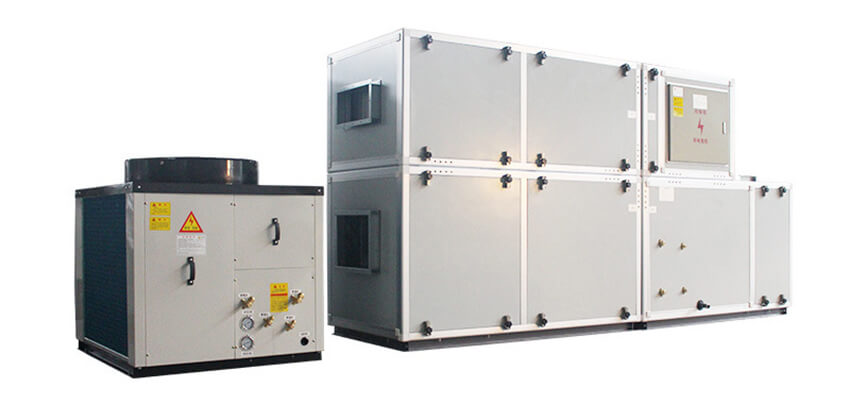
Solar-Powered HVAC Accessories
Solar-powered HVAC accessories are innovative additions to your heating and cooling system that utilize solar energy to enhance energy efficiency and reduce your carbon footprint. These accessories can help you tap into renewable energy sources while optimizing indoor comfort.
A. Solar Air Heaters
Warming with Solar Energy
- How Solar Air Heaters Work: Solar air heaters use energy from the sun to heat air, which is then circulated into your home through your HVAC system, reducing the need for traditional heating methods.
- Installation and Integration: Professional installation is recommended to ensure proper placement and integration with your existing HVAC system.
B. Solar-Powered Ventilation Fans
Enhanced Ventilation
- Attic Ventilation: Solar-powered attic fans help regulate attic temperature, reducing heat buildup in the summer and preventing moisture-related issues in the winter.
- Installation: Installation is typically straightforward and can often be done as a DIY project.
C. Solar-Powered Air Conditioning
Cooling with Renewable Energy
- Hybrid HVAC Systems: Some HVAC systems are designed to work in tandem with solar panels, using solar-generated electricity to power the air conditioning unit.
- Stand-Alone Solar AC Units: Solar-powered air conditioners that operate independently of the electrical grid are also available for residential use.
D. Benefits of Solar-Powered HVAC Accessories
Energy Savings and Sustainability
- Reduced Energy Bills: Solar-powered accessories harness free energy from the sun, reducing your reliance on traditional power sources and lowering your energy bills.
- Lower Carbon Footprint: By using clean, renewable energy, these accessories help reduce greenhouse gas emissions, contributing to a more sustainable future.
E. Solar Panel Installation
Maximizing Solar Potential
- Solar Panels for Home: Consider installing solar panels on your property to generate the electricity needed to power your solar HVAC accessories.
- Professional Consultation: Consult with solar experts to determine the optimal placement and configuration of solar panels for your home.
F. Monitoring and Control
Smart Integration
- Remote Monitoring: Many solar-powered HVAC accessories offer remote monitoring and control capabilities through smartphone apps, allowing you to track performance and make adjustments.
- Compatibility: Ensure that the solar-powered accessories you choose are compatible with your HVAC system and any existing solar installations.
G. Maintenance and Cleaning
Ensuring Efficiency
- Regular Cleaning: Solar panels and solar-powered accessories should be kept clean to maximize energy capture and efficiency.
- Inspection: Periodically inspect all components for wear and tear, and replace or repair them as needed.
Solar-powered HVAC accessories provide a sustainable and eco-friendly way to optimize your heating and cooling system’s performance while reducing your environmental impact. By harnessing the power of the sun, you can enjoy energy savings and contribute to a greener future. In the next sections, we will explore additional HVAC accessories that can further enhance your home’s energy efficiency and comfort.

The Impact of HVAC Accessories on Energy Efficiency
To grasp the significance of HVAC accessories in the pursuit of energy efficiency, it’s essential to understand how these components can substantially impact the overall performance of your heating, ventilation, and air conditioning system.
A. Temperature Control and Programmable Thermostats
Precision Climate Management
- Programmable Thermostats: Programmable thermostats offer precise control over indoor temperatures by allowing you to set heating and cooling schedules based on your daily routines.
- Energy Savings: By automating temperature adjustments, these thermostats prevent unnecessary heating or cooling when spaces are unoccupied, resulting in significant energy savings.
B. Zoning Systems
Tailored Comfort
- Zoning Defined: Zoning systems divide your property into distinct temperature zones, each with its thermostat. This setup enables you to customize heating and cooling for different areas.
- Energy Efficiency Benefits: Zoning reduces energy waste by focusing heating or cooling efforts only where needed, eliminating the need to condition the entire space uniformly.
C. HVAC Air Filters
Cleaner Air and Energy Savings
- Filter Functions: HVAC air filters serve the dual purpose of enhancing indoor air quality (IAQ) and contributing to energy efficiency.
- Reduced Strain: High-efficiency air filters trap dust and allergens, preventing them from accumulating on HVAC components. This reduces strain on the system, leading to energy savings.
D. Ceiling Fans
Aiding Air Distribution
- Complementary Role: Ceiling fans work in tandem with HVAC systems by helping distribute conditioned air more effectively.
- Energy Savings: By promoting air circulation, ceiling fans allow you to set your thermostat a few degrees higher while maintaining the same level of comfort, resulting in energy savings.
E. Smart HVAC Controls
Intelligent Energy Management
- Automation and Data: Smart HVAC controls use sensors and data analytics to optimize heating and cooling operations.
- Energy Optimization: These controls can adjust settings in real-time based on occupancy, weather, and indoor conditions, ensuring that your HVAC system operates at peak efficiency.
F. Heat Recovery Ventilators (HRVs) and Energy Recovery Ventilators (ERVs)
Efficient Ventilation
- Fresh Air Exchange: HRVs and ERVs maintain indoor air quality by exchanging stale indoor air with fresh outdoor air while recovering heat or coolness from the outgoing air.
- Energy Recovery: The heat or coolness recovered during this process helps pre-condition the incoming air, reducing the workload on your HVAC system.
G. Solar-Powered HVAC Accessories
Harnessing Renewable Energy
- Solar Panels: Solar panels can generate electricity to power HVAC systems, reducing your reliance on grid electricity and lowering energy costs.
- Solar Water Heaters: Solar water heaters can supplement your HVAC system by providing hot water for space heating or domestic use, further enhancing energy efficiency.
These HVAC accessories are not merely add-ons; they are essential tools in your quest for improved energy efficiency. As we continue our journey through this guide, we will delve deeper into each accessory’s functions, benefits, and factors to consider when selecting the best options for your specific needs. By understanding the potential of these accessories, you can take significant strides toward a more energy-efficient and sustainable indoor environment.
Conclusion
In the pursuit of creating a more energy-efficient and comfortable home, the selection of the right HVAC accessories can make a significant difference. Throughout this comprehensive guide, we’ve explored a wide range of accessories that can enhance the performance and sustainability of your heating, ventilation, and air conditioning (HVAC) system.
Key Takeaways
1. Tailored Solutions: Your choice of HVAC accessories should be tailored to your climate, energy goals, and the specific needs of your home.
2. Professional Guidance: When in doubt, consult with HVAC professionals for advice on selecting, installing, and maintaining these accessories.
3. Energy Savings: Many of these accessories are designed to reduce energy consumption, leading to lower utility bills and a reduced carbon footprint.
4. Comfort Enhancement: Improved air quality, precise temperature control, and better airflow can significantly enhance the comfort of your living spaces.
5. Environmental Impact: By investing in energy-efficient and sustainable HVAC accessories, you contribute to a more eco-friendly and sustainable future.
Whether you’re considering programmable thermostats, zoning systems, ceiling fans, or advanced technologies like HRVs, ERVs, or solar-powered accessories, each choice brings you closer to a more energy-efficient and comfortable home environment.
Remember: The road to energy efficiency and sustainability is an ongoing journey. Regular maintenance, occasional upgrades, and staying informed about emerging technologies will help you continuously improve your HVAC system’s performance.
By implementing the knowledge gained from this guide, you can make informed decisions about which HVAC accessories align with your energy-saving goals and comfort preferences. Whether you’re looking to reduce your environmental impact or simply lower your energy bills, the right accessories can help you achieve both.
Thank you for taking the time to explore the world of HVAC accessories with us. We hope this guide has empowered you to make choices that enhance your home’s comfort and contribute to a greener, more sustainable future.
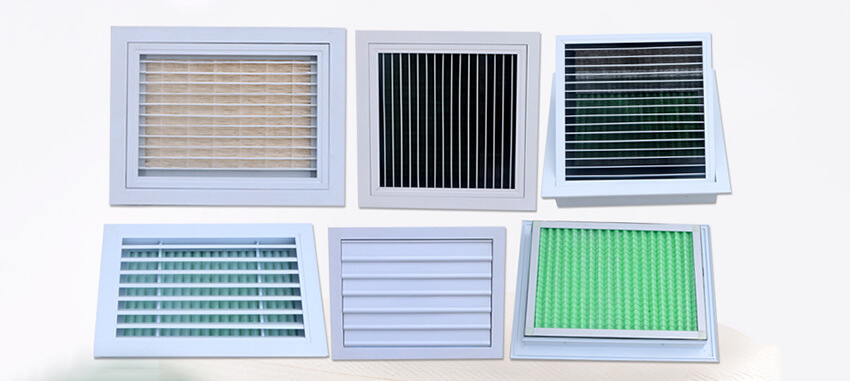
FAQs – HVAC Accessories
A. General Questions
Q1. What are HVAC accessories?
A: HVAC accessories are supplementary components and systems that enhance the performance, efficiency, and functionality of your heating, ventilation, and air conditioning (HVAC) system. They can include items like thermostats, air purifiers, zoning systems, and more.
Q2. Why should I invest in HVAC accessories?
A: Investing in HVAC accessories can lead to several benefits, including improved energy efficiency, enhanced comfort, better indoor air quality, and reduced utility bills. These accessories are designed to optimize your HVAC system’s performance.
B. Thermostats and Control
Q3. What’s the difference between a traditional thermostat and a smart thermostat?
A: A traditional thermostat allows you to manually adjust the temperature in your home. In contrast, a smart thermostat offers advanced features such as remote control, programmable schedules, learning capabilities, and integration with smart home systems.
Q4. Are programmable thermostats worth it?
A: Yes, programmable thermostats are worth it. They allow you to create customized temperature schedules that align with your daily routine, optimizing comfort and reducing energy consumption when you’re not at home.
C. Zoning Systems
Q5. What is a zoning system, and how does it work?
A: A zoning system divides your home into different zones, each with its thermostat and independent temperature control. It works by regulating airflow to specific areas of your home, ensuring efficient heating and cooling where needed.
Q6. Is a zoning system suitable for my home?
A: Zoning systems are ideal for homes with varying temperature needs in different areas, multi-story homes, or homes with large open spaces that are hard to heat or cool evenly.
D. Air Purifiers and Filters
Q7. What’s the difference between an air purifier and an air filter?
A: An air purifier is designed to remove pollutants, allergens, and contaminants from the air, providing cleaner and healthier indoor air quality. An air filter primarily captures dust and debris from the air but may not address smaller particles or pathogens.
Q8. How often should I replace my HVAC air filter?
A: The frequency of air filter replacement depends on the type of filter and usage. Generally, it’s recommended to check and replace or clean your air filter every 1 to 3 months.
E. Solar-Powered Accessories
Q9. How do solar-powered HVAC accessories work?
A: Solar-powered HVAC accessories use energy from the sun, typically captured by solar panels, to power various components of your heating and cooling system, such as air heaters, ventilation fans, and even air conditioning units.
Q10. Are solar-powered HVAC accessories cost-effective?
A: Solar-powered accessories can be cost-effective in the long run, as they reduce your reliance on traditional energy sources, leading to lower utility bills and potentially qualifying you for tax incentives or rebates.
F. Installation and Maintenance
Q11. Can I install HVAC accessories myself, or do I need a professional?
A: Some accessories, like programmable thermostats, can be installed as DIY projects. However, for more complex accessories or those involving electrical work, it’s advisable to hire a professional HVAC technician.
Q12. How do I maintain my HVAC accessories for optimal performance?
A: Maintenance requirements vary by accessory, but regular inspection, cleaning, and following manufacturer recommendations for filter replacement and system checks are essential for optimal performance.
G. Environmental Impact
Q13. How do these accessories contribute to a greener home?
A: Many HVAC accessories improve energy efficiency, reduce energy consumption, and enhance indoor air quality, all of which contribute to a greener and more environmentally friendly home.
Q14. Are there any tax incentives or rebates for installing energy-efficient HVAC accessories?
A: Depending on your location and the specific accessory, you may qualify for tax incentives, rebates, or energy efficiency programs offered by government agencies or utility companies. Check with local authorities for available incentives.
H. Choosing the Right Accessories
Q15. How do I determine which HVAC accessories are right for my home?
A: Consider factors such as your climate, energy goals, home size, and existing HVAC system. Consult with HVAC professionals for personalized recommendations.
Q16. Can I retrofit my existing HVAC system with these accessories?
A: In many cases, existing HVAC systems can be retrofitted with compatible accessories. However, it’s crucial to consult with HVAC experts to ensure proper integration and performance.
I. Budget and Financing
Q17. Are energy-efficient HVAC accessories expensive to purchase and install?
A: The cost of HVAC accessories varies depending on the type and complexity. While some accessories may have upfront costs, the long-term energy savings often outweigh the initial investment.
Q18. Are financing options available for energy-efficient HVAC upgrades?
A: Yes, financing options are available through various programs, including home improvement loans, energy-efficient mortgages, and financing offered by HVAC manufacturers or utility companies.

If you want to know more, please click below:
- Grilles, Registers & Diffusers – The Ultimate Guide
- HVAC Linear Slot Diffusers – The Ultimate Guide
- HVAC Egg Crate Diffuser – The Ultimate Guide
- HVAC Jet Nozzle Diffuser – The Ultimate Guide
- HVAC Linear Bar Grilles – The Ultimate Guide
- HVAC Air Swirl Diffusers – The Ultimate Guide
- HVAC Round Ceiling Diffusers – The Ultimate Guide
- Round Ceiling Diffusers – The Ultimate Guide
- Exhaust Air Louver – The Ultimate Guide
- HVAC Registers – The Ultimate Guide

